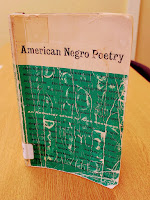Waking up this morning, I smile.
Twenty-four brand new hours are before me.
I vow to live fully in each moment.
and to look on all beings with eyes of compassion. (3)
The hours at home during the COVID-19 quarantine, as well as during daily solo runs or dog-walking excursions, continue to provide time for introspection. Recently, the titles of previously enjoyed books have come to mind, like some old friend with whom you’d lost contact but suddenly have a desire to check in on. The most recent “old friend” popped in last week during lunch. Sitting at my desk during virtual summer school, preparing to hungrily attack the peanut butter and jelly sandwich I’d packed, I thought to myself, “What is the rush?” One positive outcome of my quarantine experience has been making an effort to s-l-o-w down, a concept I had been neglectful in applying to my eating habits. At that moment,
Present Moment, Wonderful Moment: Mindfulness Verses for Daily Living, came to mind and I made a mental note to pull it from the bookshelf for a summer re-read.
When I tell my students that sometimes the largest ideas come in the smallest texts, I share this from personal reading experience.
Present Moment, Wonderful Moment by Thich Nhat Hanh is a slender volume (75 pages!) intended by the author to be a “handbook of practical down-to-earth verses” useful for recitation throughout the “entire day to help us attend to the present moment”. (vii) Thich Nhat Hanh, a Vietnamese Buddhist Monk, presents and comments on, in very secular language, forty-nine gathas (“mindfulness verses”). Having read a number of Hanh’s books, I can attest to his writing style being very accessible to the Western reader reared on Catholicism, like your’s truly. This is assisted by the beautifully, simple i
llustrations by Mayumi Oda, such as the one to the left for "Using the Telephone," sprinkled throughout the text.
The first time I revisited
Present Moment, Wonderful Moment was 20 years ago. During that time, as a means of improving my own awareness, I copied the most personally relevant of these verses onto 3 x 5” index cards and placed them strategically around the house as reminders. This was during a difficult time in my life and it helped to ground me in the important little moments that are often taken for granted, especially when I was feeling sorry for myself. Organized into four sections ("Verse for Starting the Day", "... Meditation", "...Eating Mindfully", "...For Other Daily Activities") consisting of short verses for superficially mundane daily activities ranging from "Opening the Window" to "Turning on the Television", I continue to find it very useful in focusing awareness on instances often taken for granted. No act, though, is as "mundane" as we think it to be. Always in need of broader, deeper practice, today, my peanut butter and jelly sandwich had me considering “eating”, as in developing a stronger practice of eating mindfully.
The verses shared by Hanh in
Present Moment, are simple, easy to remember, and wonderful vehicles toward deeper thought. One of my favorites is "Serving Food", perfect for consideration prior to eating a meal: "In this food,/I see clearly/the presence of the entire universe/supporting my existence." (48) In explaining the reasoning behind using verses for awareness, Hanh also touches on other ancillary aspects of eating that have wider implications, such as the awkwardness of silence we often feel and fill with "noise" like radio, television or chatter while eating.
Like any good reading, didactic or otherwise, these regular visits with Present Moment, Wonderful Moment, revealed with each pass. With any grace, the verses and ideas present therein will linger at the table for longer this time... HIGHLY RECOMMENDED reading for any seeking to slow down and (eventually--I know I am still working on it!) savor each moment.











































